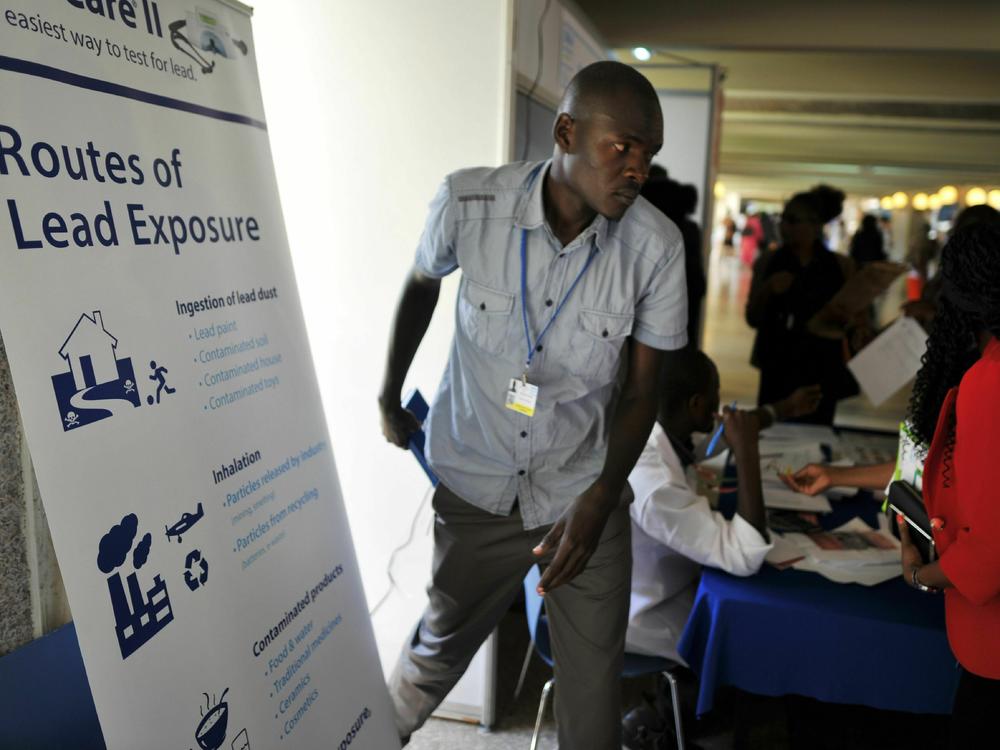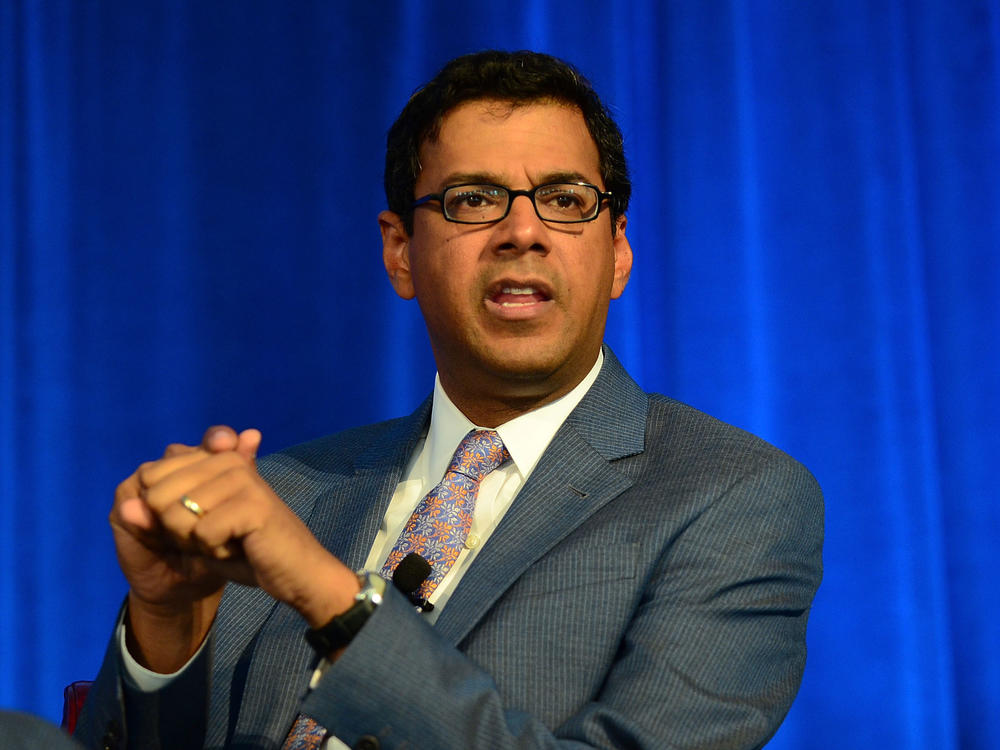Section Branding
Header Content
At long last, lead poisoning of kids is emerging as a priority on the world scene
Primary Content
In a world full of threats to children — from war to disease to starvation — there's a neglected crisis that's just now getting a jolt of attention.
It's lead poisoning, which affects both adults and children and can be especially devastating for the cognitive development of youngsters.
At a conference on lead toxicity hosted by the Center for Global Development, Rachel Silverman Bonnifield, director of the organization's working group on lead, told the audience "the consequences of lead poisoning for global health, for children's education and for overall development and economic growth are, frankly, staggering."
The keynote speaker at the conference was Atul Gawande, assistant administrator for global health for the U.S. Agency for International Development (USAID). We spoke with Dr. Gawande, who is a surgeon, a bestselling author and a recipient of the MacArthur "genius" grant, about why the federal agency, which supports programs in the Global South along with Europe and Eurasia, just added lead to its agenda last year. The interview has been edited for length and clarity.
Why did USAID decide to allocate staff and funds for lead?
I really think it's because of Flint, Michigan [where a change to using water from the Flint River as the city's water source resulted in elevated lead levels in 1 in 20 children because of old lead-based plumbing]. That brought home how significant the harms could be to children's brains and their development and educational attainment and in the long run cause high rates of cardiovascular disease. President Biden made the issue of lead poisoning in Flint and the rest of the U.S. a major focus, and we also saw that there were goods coming into the United States that had high levels of lead. We just had a death [in April] in California of a woman who died of lead poisoning from a hemorrhoid ointment that came from Vietnam. It turns up in spices, in medicines, in cosmetics and then paint, and that can get to the United States as well.
The president's commitment on addressing domestic lead exposure led us to recognize that 90% of the lead poisoning in the world is in children in low- and middle-income countries.
At a time when the world is facing so many crises, how do you find the bandwidth to address lead?
So, lack of bandwidth and resources are a big part of the reason why and how we are able to put focus on lead. Here is a problem that it is valuable to pivoting to because No. 1, it has a massive impact on global health and on child welfare.
No. 2, it's tractable. There are relatively low-cost things that can be done in a resource-constraint environment that mostly have to do with eliminating the use of lead in consumer goods, where it's totally unnecessary, and addressing and enforcing laws and regulations in countries around the world that can keep it out of industrial uses as well. And [No. 3], it's highly neglected, and so there's low-hanging fruit. And so, a small team on our part, working with countries around the world where lead [exposure] is at the highest levels, can get a lot done in a relatively short time.
What will USAID do to reduce lead exposure around the world?
We have to do three things. One is building awareness. For example, the global health community has not been aware of the problem. It came as a shock to me as someone who's been in public health for several decades. We're raising awareness by having meetings around the world, such as the CGD conference. We're convening leaders on the issue at the World Health Assembly meeting [to be held in Geneva in May] to bring these issues home.
Second, we have not had enough measurements of blood levels in large enough numbers of children in low- and middle-income countries where lead is a threat, so that people and local communities can understand that the problem is right at their doorstep.
Third will be straightforward actions to address the issue. I was recently at a meeting with a team from Indonesia and could show them evidence of how nearly all of the paint in their country that's been tested turns out to have very high lead levels and that there's an opportunity to join The Global Alliance to Eliminate Lead Paint, a voluntary partnership formed by the United Nations Environment Programme and the World Health Organization to prevent exposure to lead by promoting the phaseout of paints containing lead.
You said at the CGD conference that your budget to tackle lead globally this year is $1.5 million. Can you really be effective at that funding level?
When we have needed to tackle major global health issues, it typically requires billions or tens of billions of dollars and so yes, the $1.5 million that USAID received to work on this problem is very small. But it doesn't require a billion dollars. It will require more money and we will be working with philanthropies and also working to mobilize other money USAID has. I think you'll see that as we raise attention, members of Congress and people in the private sector are recognizing that if you want to save lives and improve outcomes, this turns out to be one of the best places to do it. And we can't get our arms around reducing heart disease on the global level and we will not get improvements in educational attainment without tackling this problem.
What skills do you bring from your professional experience that are helping you work to resolve this issue?
Thanks for asking. At one level, I'm a storyteller helping people connect the dots around complex problems and recognize how [lead poisoning] harms real-world people, how a woman in California can die from lead in the environment in Vietnam, and why it is a failure on multiple dimensions and how we can actually solve this. That's what I've been doing over and over.
In my current role, we have 2,500 people at USAID in the global health sector spread across almost a hundred countries in the world and they are tapping into partnerships with governments that help us reach an extraordinary scale. And so, I'm bringing these stories and realities to people who are in touch with leaders in every part of the world, and we can show how paint in the Philippines or batteries in Brazil are being addressed and how other countries can learn from it.
And what we are seeing are people in the medical community and in governments around the world saying, "I had no idea, and of course we have to take this on."
Fran Kritz is a health policy reporter based in Washington, D.C., and a regular contributor to NPR. She also reports for the Washington Post and Verywell Health. Find her on X: @fkritz


